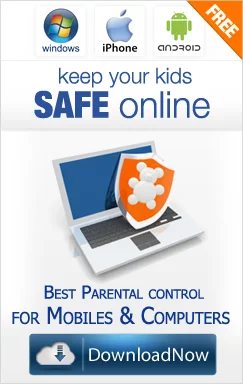+1 845 259 2974 (11 a.m to 7 p.m CST)
7 Tips for Encouraging Healthy Technology Use Among Teens

Technology connects us like never before. For teens, it’s a window to knowledge, creativity, and new opportunities. But it also brings risks: peer pressure spiraling through social media or harmful habits forming from endless scrolling.
When balanced with care and intention, tech use can empower young minds rather than hold them back. And teens don’t just adapt to the digital age...no! They thrive in it when guided wisely.
So how then can we nurture this positive relationship with technology? It starts at home. Here are seven practical tips every parent of a teenager should know.
1. Encourage Regular Tech-Free Family Time
When screens dominate, family connections fade. Teens might not realize it, but constantly chatting or gaming during dinner disconnects them from those closest to them. Over time, these habits can chip away at the value of shared moments.
Create intentional spaces for togetherness without technology. Try a no-phone rule at meals or dedicate one night weekly for tech-free activities like board games or outdoor fun. Explain why these boundaries matter - teens often respond better when they understand the purpose behind rules.
Small changes like these preserve bonds and remind everyone that real-life connection always comes first in a busy digital world. And that’s something they can gladly pass on to their future generations.
2. Set Clear Boundaries for Online Usage
We mentioned boundary setting earlier on, or did we? These are especially critical for internet usage among late teenagers and mid-teens. Without limits, constant scrolling or late-night gaming can become unhealthy habits fast.
Start with basics like designated screen-free zones - bedrooms and dining areas work well - or curfews such as no devices an hour before bed. This not only reduces overstimulation but also improves sleep quality by limiting blue light exposure at night.
Be firm yet flexible, adapting rules to your teen's needs without compromising balance. When boundaries feel reasonable and consistent, they’re far more likely for these young lads and lassies to stick long-term.
3. Introduce Digital Activities That Build Skills or Hobbies
Oh boy, today’s kids are just super smart, no doubt about it. And, no kidding, the fact that one can learn something as initially complex as coding by age 5 tells you one thing. Technology has the power to turn curiosity into creativity.
Channel your teen’s screen time toward activities that build skills they’ll cherish long-term.
For example:
- Learning photography and editing their own images
- Exploring music production software to create beats or songs
- Crafting personalized Mixbook hardcover photo books from digital memories
- Designing animations or illustrations using beginner-friendly apps like Canva
Let them see how tech can fuel their talents beyond entertainment, and they’ll gain confidence in using devices with purpose instead of distraction.
4. Teach Teens How to Spot Misinformation and Stay Critical Online
The internet isn’t always what it seems, and teens can easily fall for misleading content without realizing it. Helping them sharpen their critical thinking skills is key to navigating the digital world albeit responsibly.
Try these strategies:
- Show how to verify sources using reputable websites
- Discuss the importance of cross-checking information before believing or sharing it
- Highlight red flags like overly dramatic headlines or vague claims
- Introduce fact-checking tools such as Snopes or PolitiFact
Also, encourage open discussions about what they come across online. By practicing discernment together, you help them become thoughtful users who question rather than accept everything at face value.
5. Help Teens Balance Social Media With Real-Life Relationships
Tik-Tok, X, Facebook, Insta, name it; it’s where our young ones spend a giant chunk of their time and Wi-Fi connectivity. But the non-stop updates can make them forget what genuine connection feels like, and that's unhealthy!
Instead of or besides monitoring their social media usage, consider encouraging regular meetups with friends outside the digital space. Suggest family outings or volunteering activities to nurture face-to-face interactions.
And once you CREATE the chance, talk openly about how online interactions differ from real-life bonds.Helping teens strike this balance reinforces deeper connections that no amount of likes or comments could replace.
6. Use Parental Controls Thoughtfully Without Being Overbearing
The good thing about being a parent to a teenage child is that you own most if not all the technology they’re exposed to, at least while at home. You get to decide who gets access to Wi-Fi, when, and what they can or cannot do with it.
There are plenty of tools that give you flexibility in shaping safe online spaces while fostering trust in your teen’s digital experiences.
Apps and Streaming Restrictions
Parental control apps like Mobicip, FamiSafe, Qustodio, or the Antivirus Giant’s Norton Family make managing screen time and content restrictions easier.
Moreover, streaming services such as Netflix and Amazon offer customizable profiles for kids as well. Even YouTube’s restricted mode can filter unsuitable videos effectively.
7. Lead by Example with Your Own Tech Habits at Home
Last but by no means least, your actions should exemplify the balance you wish to instill in your teen. What this does is that it demonstrates how healthy technology use looks in everyday life without lecturing.
So, avoid mindless scrolling when spending time together. Put down devices during meals or family discussions. Show interest in offline hobbies like reading or gardening and share those moments with them.
Seeing you practicing what you preach makes it easier for them to adopt similar habits naturally and consistently over time.
Technology shapes how teens learn, connect, and grow. With the right guidance and the tips we just shared, it becomes a tool for empowerment rather than distraction.
Don't forget to create safe spaces to discuss challenges like cyberbullying and peer pressure as well; it helps them navigate digital life more composed, and thoughtfully. Supporting balance now builds habits that will benefit them well into adulthood.





















